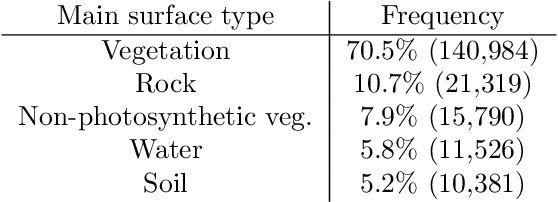Thomas Ohlson Timoudas
AI Factories: It's time to rethink the Cloud-HPC divide
Sep 16, 2025Abstract:The strategic importance of artificial intelligence is driving a global push toward Sovereign AI initiatives. Nationwide governments are increasingly developing dedicated infrastructures, called AI Factories (AIF), to achieve technological autonomy and secure the resources necessary to sustain robust local digital ecosystems. In Europe, the EuroHPC Joint Undertaking is investing hundreds of millions of euros into several AI Factories, built atop existing high-performance computing (HPC) supercomputers. However, while HPC systems excel in raw performance, they are not inherently designed for usability, accessibility, or serving as public-facing platforms for AI services such as inference or agentic applications. In contrast, AI practitioners are accustomed to cloud-native technologies like Kubernetes and object storage, tools that are often difficult to integrate within traditional HPC environments. This article advocates for a dual-stack approach within supercomputers: integrating both HPC and cloud-native technologies. Our goal is to bridge the divide between HPC and cloud computing by combining high performance and hardware acceleration with ease of use and service-oriented front-ends. This convergence allows each paradigm to amplify the other. To this end, we will study the cloud challenges of HPC (Serverless HPC) and the HPC challenges of cloud technologies (High-performance Cloud).
Creating and Benchmarking a Synthetic Dataset for Cloud Optical Thickness Estimation
Nov 23, 2023



Abstract:Cloud formations often obscure optical satellite-based monitoring of the Earth's surface, thus limiting Earth observation (EO) activities such as land cover mapping, ocean color analysis, and cropland monitoring. The integration of machine learning (ML) methods within the remote sensing domain has significantly improved performance on a wide range of EO tasks, including cloud detection and filtering, but there is still much room for improvement. A key bottleneck is that ML methods typically depend on large amounts of annotated data for training, which is often difficult to come by in EO contexts. This is especially true for the task of cloud optical thickness (COT) estimation. A reliable estimation of COT enables more fine-grained and application-dependent control compared to using pre-specified cloud categories, as is commonly done in practice. To alleviate the COT data scarcity problem, in this work we propose a novel synthetic dataset for COT estimation, where top-of-atmosphere radiances have been simulated for 12 of the spectral bands of the Multi-Spectral Instrument (MSI) sensor onboard Sentinel-2 platforms. These data points have been simulated under consideration of different cloud types, COTs, and ground surface and atmospheric profiles. Extensive experimentation of training several ML models to predict COT from the measured reflectivity of the spectral bands demonstrates the usefulness of our proposed dataset. Generalization to real data is also demonstrated on two satellite image datasets -- one that is publicly available, and one which we have collected and annotated. The synthetic data, the newly collected real dataset, code and models have been made publicly available at https://github.com/aleksispi/ml-cloud-opt-thick.
 Add to Chrome
Add to Chrome Add to Firefox
Add to Firefox Add to Edge
Add to Edge